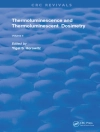Written by an internationally recognized group of editors and
contributors, Handbook of Elemental Speciation, Volume 2
provides a comprehensive, cross-disciplinary presentation of the
analytical techniques involved in speciation.
* Comprehensive coverage of key elements and compounds in
situ
* Addresses the analysis and impact of these elements and
compounds, e.g. arsenic, lead, copper, iron, halogens, etc.,
in food, the environment, clinical and occupational health
* Detailed methodology and data are reported, as well as
regulatory limits
* Includes general introduction on the impact in these key
areas
Spis treści
List of contributors.
Preface.
Acknowledgements.
1. Introduction.
2. Elements by Element Review .
2.1. Introduction.
2.2. Speciation of Aluminium.
2.3 Speciation of Antimony.
2.4 Speciation of Arsenic.
2.5. Speciation of Cadmium.
2.6. Speciation of Chromium.
2.7. Speciation of Cobalt.
2.8. Speciation of Copper.
2.9. Speciation of Iron.
2.10. Speciation of Lead.
2.11. Speciation of Manganese.
2.12. Speciation of Mercury .
2.13. Speciation of Molybdenum.
2.14. Speciation of Nickel.
2.15. Speciation of Platinum, Gold and Rhodium.
2.16. Speciation of Selenium .
2.17. Speciation of Silicon .
2.18. Speciation of Sulfur.
2.19. Speciation of Thallium.
2.20. Speciation of Tin.
2.21. Speciation of Vanadium.
2.22. Speciation of Zinc.
2.23. Speciation of Actinides.
2.24. Speciation of Halogens.
2.25. Volatile Metal Compounds of Biogenic Origin.
2.26. Metal Complexes of Humic Substances.
2.27. Metal Complexes of Proteins.
3. Modeling of Elemental Species.
3.1. Modeling of Trace Elements Partitioning in the
Environment.
3.2 Modeling in Nutrition.
3.3. Modeling of Trace Elements in Health and Disease.
4. Elemental Speciation and Present Day Legislation.
Index.
O autorze
Rita Cornelis, Department of Analytical Chemistry, Ghent University, The Netherlands.












